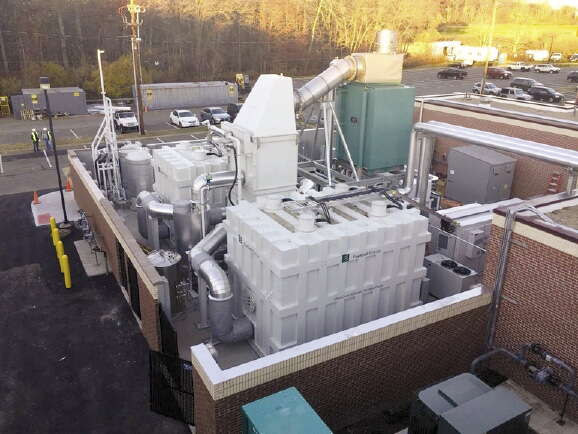
Processing Your Payment
Please do not leave this page until complete. This can take a few moments.
-
News
-
Editions
-
- Lists
-
Viewpoints
-
HBJ Events
-
Event Info
- 2024 Economic Outlook Webinar Presented by: NBT Bank
- Best Places to Work in Connecticut 2024
- Top 25 Women In Business Awards 2024
- Connecticut's Family Business Awards 2024
- What's Your Story? A Small Business Giveaway 2024 Presented By: Torrington Savings Bank
- 40 Under Forty Awards 2024
- C-Suite and Lifetime Achievement Awards 2024
- Connecticut's Health Care Heroes Awards 2024
-
-
Business Calendar
-
Custom Content
- News
-
Editions
View Digital Editions
Biweekly Issues
- April 15, 2024
- April 1, 2024
- March 18, 2024
- March 4, 2024
- February 19, 2024
- February 5, 2024
- January 22, 2024
- January 8, 2024
- Dec. 11, 2023
- + More
Special Editions
- Lists
- Viewpoints
-
HBJ Events
Event Info
- View all Events
- 2024 Economic Outlook Webinar Presented by: NBT Bank
- Best Places to Work in Connecticut 2024
- Top 25 Women In Business Awards 2024
- Connecticut's Family Business Awards 2024
- What's Your Story? A Small Business Giveaway 2024 Presented By: Torrington Savings Bank
- 40 Under Forty Awards 2024
- C-Suite and Lifetime Achievement Awards 2024
- Connecticut's Health Care Heroes Awards 2024
Award Honorees
- Business Calendar
- Custom Content
Going Green: FuelCell CEO Jason Few aims to transform global energy landscape
 FuelCell Energy CEO Jason Few.
FuelCell Energy CEO Jason Few.
Jason Few, CEO of Danbury-based FuelCell Energy, has big plans for the future of fuel cell energy — including widespread use of the technology and a positive impact on the environment worldwide.
The company designs, manufactures, installs, operates and maintains fuel cell power plants, and it currently employs some 400 workers, with about 325 in Connecticut.
FuelCell also has a factory in Torrington. Its clients range from utilities to universities, hospitals, manufacturers and municipalities. It has several projects happening in the state, including at the U.S. Naval Submarine Base in Groton, and currently has installations on three continents.
Over a career that spans more than three decades, Few has had leadership roles with companies such as Sustayn Analytics LLC, Continuum Energy, NRG Energy and Reliant Energy.
Few took over as president and CEO of FuelCell Energy in Aug. 2019. At the time, the company indicated Few would be responsible for enhancing its commercial activity, growing revenue and boosting profitability.
He has challenges to overcome — FuelCell, for example, has never turned a profit.
For the fiscal year 2020, the company reported revenues of $70.9 million, a 17% increase over the prior year. It reported a 2020 loss from operations of $39.2 million, an improvement over the prior year’s $66.9 million loss.
Fuel cells remain somewhat constrained by cost, and the fact that hydrogen itself is often produced using fossil fuels, which weighs against its green credentials. Connecticut and other states have also set far more ambitious goals for other kinds of clean energy technology, including solar and wind.
Still, Few said he’s optimistic about the company’s growth trajectory and opportunities for new business.
Recent legislation is expected to boost the hydrogen power industry. Gov. Ned Lamont recently signed into law a bill requiring electric distribution companies, such as Eversource and Avangrid, to buy up to 30 megawatts of fuel cell generation projects by Jan. 1, 2022.
Few is passionate about the “energy transition,” the transformation of the global energy sector from fossil-based to zero-carbon by the second half of this century. The goal is to reduce carbon dioxide emissions related to energy, and therefore, reduce negative impacts on the environment and climate.
New Haven BIZ recently spoke to Few about his plans for the company.
Tell us about FuelCell’s technology.
FuelCell Energy’s platforms are based on a particular type of fuel cell and we have two types of fuel cells.
Our core technology is based on a molten carbonate fuel cell. We have over 250-plus megawatts of this platform operating today across three continents between the U.S., Europe and South Korea.
That molten carbonate fuel cell technology is one in which we use fuel (such as natural gas or renewable biogas), without combusting the fuel, to effectively make hydrogen. That hydrogen is then used to make power.
The second technology we have is solid oxide, which we are working to commercialize. It effectively works the same way in terms of using fuel. It can use hydrogen to produce power.
How is it different?
Unlike traditional power generation platforms, we don’t combust the fuel. We have a much lower environmental footprint. We operate at a very low decibel level.
Our platform can be placed right next to buildings, offices and universities, and even next to where people live.
In addition to that, our platforms are a small footprint. So unlike other technologies, like wind and solar, which require massive land use, we can deploy our technology in very small footprints.
For example, we have a 2.8 megawatt platform in Connecticut and it’s on less than a quarter-acre of land. But we are co-located with a 2.3 megawatt solar field, and it takes nine acres.
How can your technology support other clean energy?
It is important to have a way to really support intermittent technologies, like wind and solar. Because they are intermittent (depending on the weather), you can’t rely on them 24 hours a day, seven days a week.
Long duration energy storage is really important. We think the answer to that is hydrogen. Our platforms have the ability to generate hydrogen, store that hydrogen, and then use that hydrogen for power production.
What are your current biggest projects?
We have a project right now in Connecticut at the U.S. Naval Submarine Base in Groton. That project is 7.4 megawatts.
We are delivering a platform that is going to operate in microgrid mode, so when there are grid disturbances, our platform will deliver power just to the Navy, so the submarine base can continue its operations.
We have another project in the state that we will start soon, and that is a 14.8 megawatt project in Derby. We also have one in Hartford that is 7.4 megawatts. There is one in Long Island that is in construction right now for 7.4 megawatts.
How is the company working toward the clean energy transition?
We believe that distributed energy is going to continue to become more and more important. (Distributed energy refers to technology that generates power at or near where it will be used.)
One of the things that makes Connecticut pretty special is the beauty of the state, but those trees that make the state so pretty also create havoc on an energy grid when one of those trees falls on a transmission line.
By using distributed energy, you can eliminate some of those above-ground risk issues and still deliver reliable power.
Hydrogen is going to continue to become an important part of the energy transition. We can deliver hydrogen exactly where it is needed.
Generally, hydrogen is produced centrally and then trucked to where it is needed. We can put the hydrogen platform exactly where the use of the hydrogen is going to occur. This eliminates the need for transportation and trucks on highways.
We are producing hydrogen in a very clean way. You can produce hydrogen and you can store it — in salt caverns, pipelines or pressurized tanks.
We think we have an opportunity to play a major role in achieving the climate goals of not only the U.S., but more broadly, the world.
Several storms in recent years have caused long-term power outages — can this technology help avoid this problem?
It can. Most power generation resources, because of the space they require, are not located where the power is actually consumed.
You have to transport that power from long distances on high voltage transmission lines. If you have a severe storm or other natural disaster and those high voltage transmission lines are cut or impacted, then you lose all that power.
Our platform can be located in an urban area, or in a business district. If you put our platform where the power is actually consumed, you significantly reduce the risk from weather-related or other natural disasters. It has a significant impact in the ability to minimize disruptions from those types of events.
We have a microgrid application in California. During one of the wildfires, our platform continued to perform.
What’s an example of how your technology has helped a customer and the environment?
In California, we are developing a project with Toyota. Our distributed hydrogen platform will deliver three value streams to Toyota.
We will deliver power where they need it. We will actually produce water with our platform. That becomes particularly valuable in an area in severe drought conditions.
The fact that Toyota will not have to use water as a natural resource is a significant benefit. We will deliver 1,200 kilograms of hydrogen a day to Toyota that it will use as fuel for its Mirai fuel cell electric vehicle.
We are delivering green hydrogen and carbon neutral power and water off of one single platform.
Do you expect you’ll be having more projects around the state and world?
We do. In fact, the state legislature just passed a bill, and it has been signed by Gov. Ned Lamont, in support of Avangrid and Eversource purchasing 30 megawatts of fuel cells.
We think that is an opportunity for our company to develop some of those projects in the state. We are bidding on a number of projects. We see solid growth potential in the state of Connecticut and around the world.
Are fuel cells more expensive than other options?
It is all very contract specific. Our platform has the ability to take advantage of programs such as an investment tax credit, which helps drive down the overall cost.
In many areas, our platform is considered renewable, so there is the ability to take advantage of renewable energy credits, which also contributes to lowering the cost. If you look at the total cost of energy, and the value of reduced emissions, it is quite price competitive.
Our platforms deliver multiple values to customers. For example, we provide power to Pfizer and steam for their manufacturing process. So they are getting two benefits, in addition to the enhanced reliability by lowering their dependence on the grid.
There is real value to that power certainty in manufacturing. We think about value beyond just the price-per-kilowatt.
Has the pandemic had any impact on the company?
In March 2020, we actually made the decision to shut down our factory in Torrington, as well as other operations around the world. We kept all of our employees on payroll, with full benefits. (FuelCell received a $6.57-million Paycheck Protection Program loan in 2020 but fully repaid it earlier this year.)
We reopened at the end of June 2020. We have very committed team members, who continued to perform for our customers.
We are back up and running fully, and obviously very closely monitoring what is happening with the delta variant and spread of COVID now.
Where do you see the company in five years?
In five years, we are a company that is delivering profitability. We are a company that has proven itself to be an important, critical part of the energy transition, and our platform technology is needed in order to realize global decarbonization goals.
We will have commercially launched our solid oxide platform and have effectively established ourselves as a major player in the hydrogen transition.


2022 Giving Guide
This special edition informs and connects businesses with nonprofit organizations that are aligned with what they care about. Each nonprofit profile provides a crisp snapshot of the organization’s mission, goals, area of service, giving and volunteer opportunities and board leadership.
Learn more
Subscribe
Hartford Business Journal provides the top coverage of news, trends, data, politics and personalities of the area’s business community. Get the news and information you need from the award-winning writers at HBJ. Don’t miss out - subscribe today.
Subscribe
2024 Book of Lists
Delivering Vital Marketplace Content and Context to Senior Decision Makers Throughout Greater Hartford and the State ... All Year Long!
Read Here-
2022 Giving Guide
This special edition informs and connects businesses with nonprofit organizations that are aligned with what they care about. Each nonprofit profile provides a crisp snapshot of the organization’s mission, goals, area of service, giving and volunteer opportunities and board leadership.
-
Subscribe
Hartford Business Journal provides the top coverage of news, trends, data, politics and personalities of the area’s business community. Get the news and information you need from the award-winning writers at HBJ. Don’t miss out - subscribe today.
-
2024 Book of Lists
Delivering Vital Marketplace Content and Context to Senior Decision Makers Throughout Greater Hartford and the State ... All Year Long!
ABOUT
ADVERTISE
NEW ENGLAND BUSINESS MEDIA SITES
No articles left
Get access now
In order to use this feature, we need some information from you. You can also login or register for a free account.
By clicking submit you are agreeing to our cookie usage and Privacy Policy
Already have an account? Login
Already have an account? Login
Want to create an account? Register
Get access now
In order to use this feature, we need some information from you. You can also login or register for a free account.
By clicking submit you are agreeing to our cookie usage and Privacy Policy
Already have an account? Login
Already have an account? Login
Want to create an account? Register






0 Comments